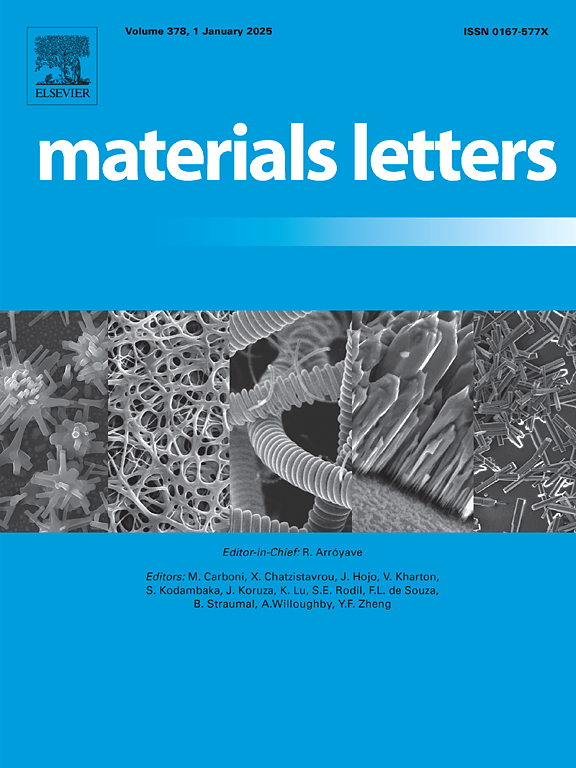Integrating machine-learning and nanotechnology: imatinib-loaded nanomicelles for targeted therapy in MCF-7 breast cancer
IF 2.7
4区 材料科学
Q3 MATERIALS SCIENCE, MULTIDISCIPLINARY
引用次数: 0
Abstract
Using machine-learning (ML) algorithms, we developed and characterized imatinib-loaded nanomicelles to enhance tumor-targeted delivery and reduce systemic toxicity. Nanomicelles were synthesized via an F127-mediated oil-in-water self-assembly process, achieving 65 % encapsulation efficiency and a uniform particle size of 257 nm. In-vitro studies showed pronounced pH-responsive release, with accelerated drug liberation at acidic pH (5.4) mimicking the tumor microenvironment and sustained release at physiological pH (7.4). To analyse release kinetics, we applied a supervised ML framework across eight regression algorithms. XGBoost delivered the best accuracy (R2 = 0.998, MAE = 0.87) with strong cross-validation (CV, R2 = 0.994). Modeling revealed 38–42 % faster release at pH 5.4, with time–pH interaction explaining 72 % of kinetic variability. These in-vitro results suggest that nanomicelles enable pH-triggered release and that ML can predict release kinetics, warranting further validation in biological systems.
整合机器学习和纳米技术:装载伊马替尼的纳米胶束用于MCF-7乳腺癌的靶向治疗
利用机器学习(ML)算法,我们开发并表征了负载伊马替尼的纳米胶束,以增强肿瘤靶向递送并降低全身毒性。通过f127介导的水包油自组装工艺合成了纳米胶束,包封率达到65%,粒径均匀,为257 nm。体外研究显示明显的pH响应释放,在模拟肿瘤微环境的酸性pH(5.4)下加速药物释放,在生理pH(7.4)下持续释放。为了分析释放动力学,我们在八种回归算法中应用了有监督的ML框架。XGBoost具有较强的交叉验证(CV, R2 = 0.994),准确度最高(R2 = 0.998, MAE = 0.87)。模型显示,pH为5.4时释放速度加快38 - 42%,时间- pH相互作用解释了72%的动力学变异。这些体外实验结果表明,纳米胶束可以促进ph触发释放,ML可以预测释放动力学,需要在生物系统中进一步验证。
本文章由计算机程序翻译,如有差异,请以英文原文为准。
求助全文
约1分钟内获得全文
求助全文
来源期刊

Materials Letters
工程技术-材料科学:综合
CiteScore
5.60
自引率
3.30%
发文量
1948
审稿时长
50 days
期刊介绍:
Materials Letters has an open access mirror journal Materials Letters: X, sharing the same aims and scope, editorial team, submission system and rigorous peer review.
Materials Letters is dedicated to publishing novel, cutting edge reports of broad interest to the materials community. The journal provides a forum for materials scientists and engineers, physicists, and chemists to rapidly communicate on the most important topics in the field of materials.
Contributions include, but are not limited to, a variety of topics such as:
• Materials - Metals and alloys, amorphous solids, ceramics, composites, polymers, semiconductors
• Applications - Structural, opto-electronic, magnetic, medical, MEMS, sensors, smart
• Characterization - Analytical, microscopy, scanning probes, nanoscopic, optical, electrical, magnetic, acoustic, spectroscopic, diffraction
• Novel Materials - Micro and nanostructures (nanowires, nanotubes, nanoparticles), nanocomposites, thin films, superlattices, quantum dots.
• Processing - Crystal growth, thin film processing, sol-gel processing, mechanical processing, assembly, nanocrystalline processing.
• Properties - Mechanical, magnetic, optical, electrical, ferroelectric, thermal, interfacial, transport, thermodynamic
• Synthesis - Quenching, solid state, solidification, solution synthesis, vapor deposition, high pressure, explosive
 求助内容:
求助内容: 应助结果提醒方式:
应助结果提醒方式:


